What is L.A.’s most beloved landmark? We put it to a vote
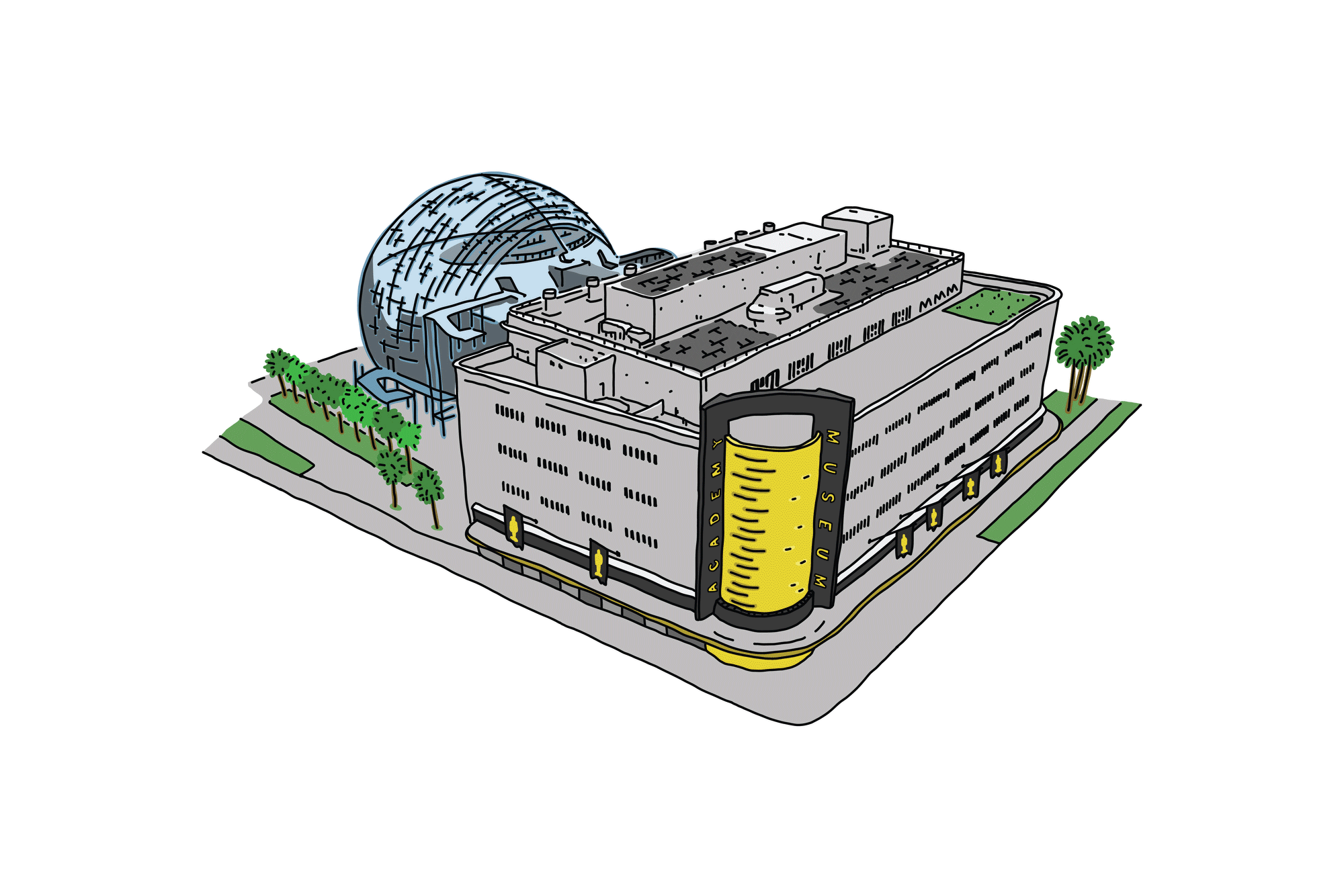
- Share via
What landmark says “L.A.” more than any other? Walt Disney Concert Hall? Watts Towers? The Chinese Theatre on Hollywood Boulevard?
The Times’ arts team asked itself that question in debating where architect Renzo Piano‘s sphere building — the new orb-shaped theater and viewing terrace nicknamed “the Death Star” at the Academy Museum of Motion Pictures — would rank in such a list.
For the record:
5:30 p.m. Sept. 8, 2021An earlier version of this article misattributed Chris Burden’s “Urban Light” to Mike Kelley.
As part of a wholly unscientific exercise, we brainstormed a ballot of 25 sites that stand as visual icons of L.A. We included postcard classics as well as some fun wild cards like Pink’s hot dog stand, Randy’s Donuts and the 1989 Kentucky Fried Chicken restaurant on Western Avenue designed by Grinstein + Daniels Architects — a bucket-shaped paean to postmodernism. (Yes, it was lunchtime when we started brainstorming.)
Landmarks earned points for varied reasons. The Petersen Automotive Museum went onto the ballot simply because it’s across the street from the Academy Museum and impossible to miss (for better or for worse). The LAX Theme Building landed at No. 2 on one ballot because of its symbolism and sentiment: It’s the place where so many L.A. dreams begin, and it at once summons nostalgia for the past and hope for the future.
After writers and editors started filling out their ballots, other possibilities did suddenly become obvious: Dodger Stadium and the Rose Bowl. The Norton Simon Museum and the Huntington Library, Art Museum & Botanical Gardens. The Venice canals and the Los Angeles River. Grand Central Market and Musso & Frank. The Paramount water tower and the Sleeping Beauty Castle at Disneyland. But we stuck to the original ballot and figured all the possible omissions can be part of your second-guessing fun.
The Hollywood sign ranked No. 1 on three ballots. Griffith Observatory, Disney Hall and Chris Burden’s “Urban Light” installation at the Los Angeles County Museum of Art topped others’ lists. In fairness to Piano and the sphere, some landmarks need time to win over skeptics. While reviewing early Times photography of the glass-topped circular theater, editors noticed that when it’s viewed from a low angle, Piano’s creation looked less like the Death Star and more like a cute, minimalist farm animal. Perhaps it just needs a different nickname to rocket up the landmark rankings. “The Piggy,” anyone?
Our cumulative staff ranking, from worst to best, illustrated by Mikki Paek:
• • • • •
25
Petersen’s Automotive Museum
The glaring silver-and-red façade debuted in 2015 as part of a $90-million makeover that The Times’ architecture critic described as “happily tasteless.”

• • • • •
24
PoMo KFC in Koreatown
Some call it ugly, others think it’s pure art: Either way, the KFC restaurant shaped like a bucket of chicken in Koreatown gets people talking.
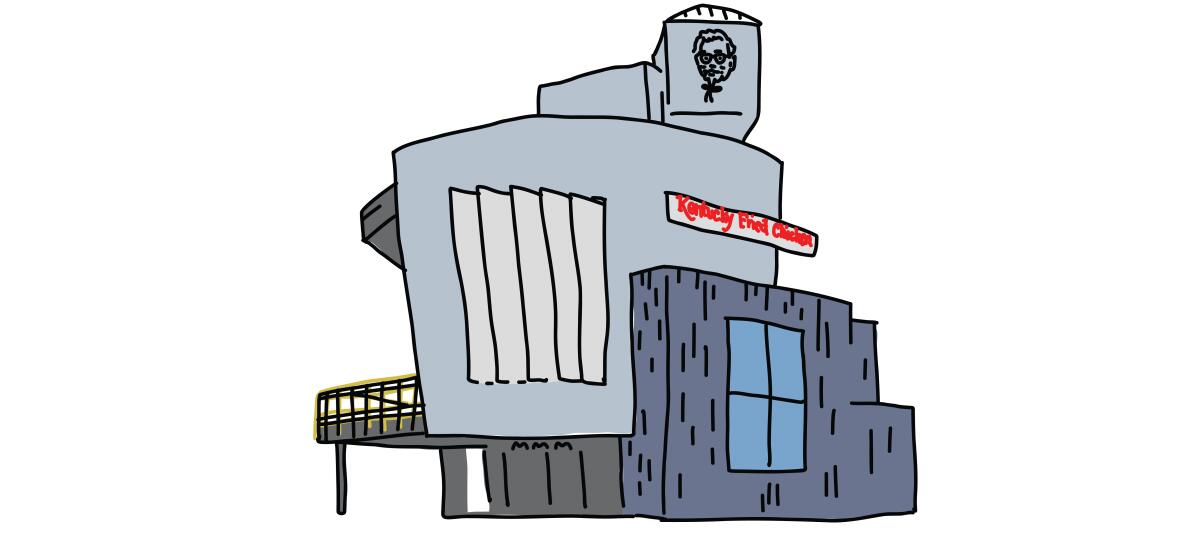
• • • • •
23.
The Broad
It helped to transform Grand Avenue, and the museum’s dimpled white shell has quickly become the selfie station of downtown L.A.

• • • • •
22
2nd Street Tunnel, downtown L.A.
Running under Bunker Hill, this tunnel’s shiny tiles have made it an ideal filming location for “Blade Runner,” “Flashdance,” “The Terminator” and so many music videos and commercials.
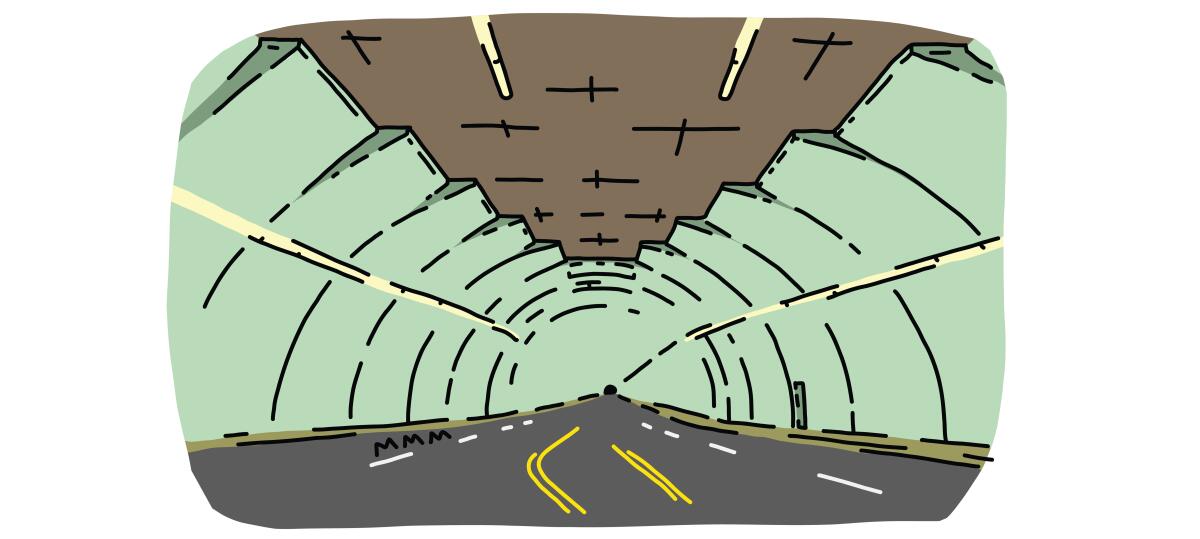
• • • • •
21
Academy Museum’s sphere
The massive concrete orb grafted onto the back of the Academy Museum of Motion Pictures just might be eccentric enough to worm its way into Angelenos’ hearts. Give it time.
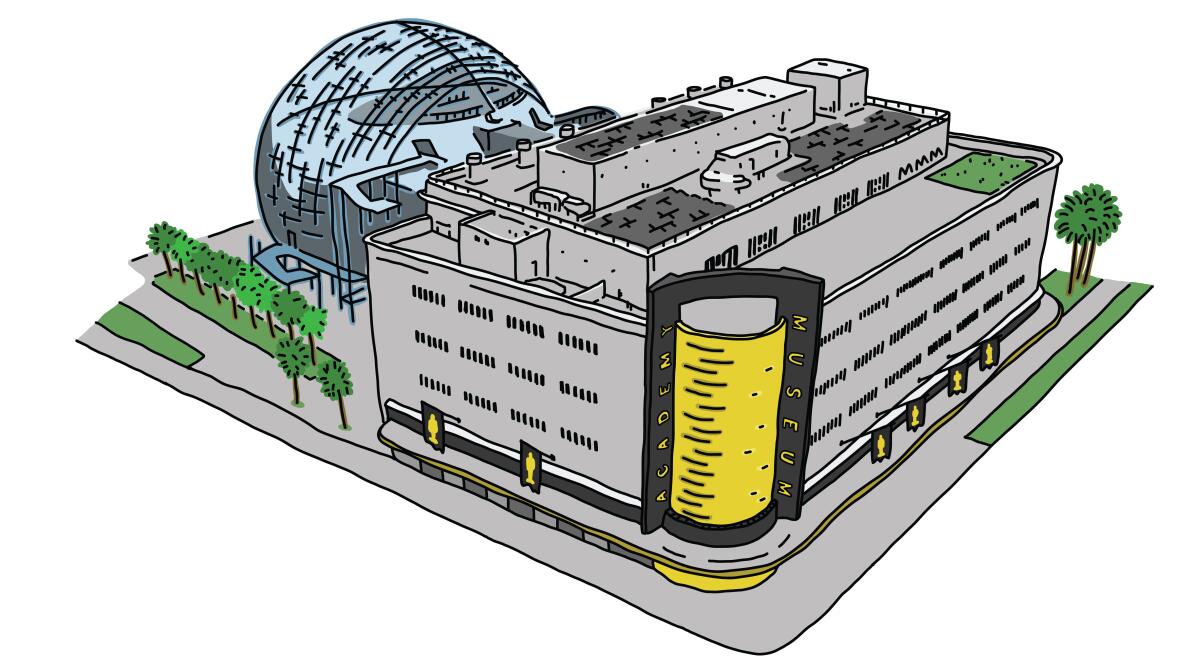
• • • • •
20
Pink’s Hot Dogs
The only thing wrong with our illustration of Pink’s is it’s missing the line of hungry fans outside the historic Hollywood hot dog stand, which began as a pushcart in 1939 and has become a bona fide landmark on La Brea Avenue.
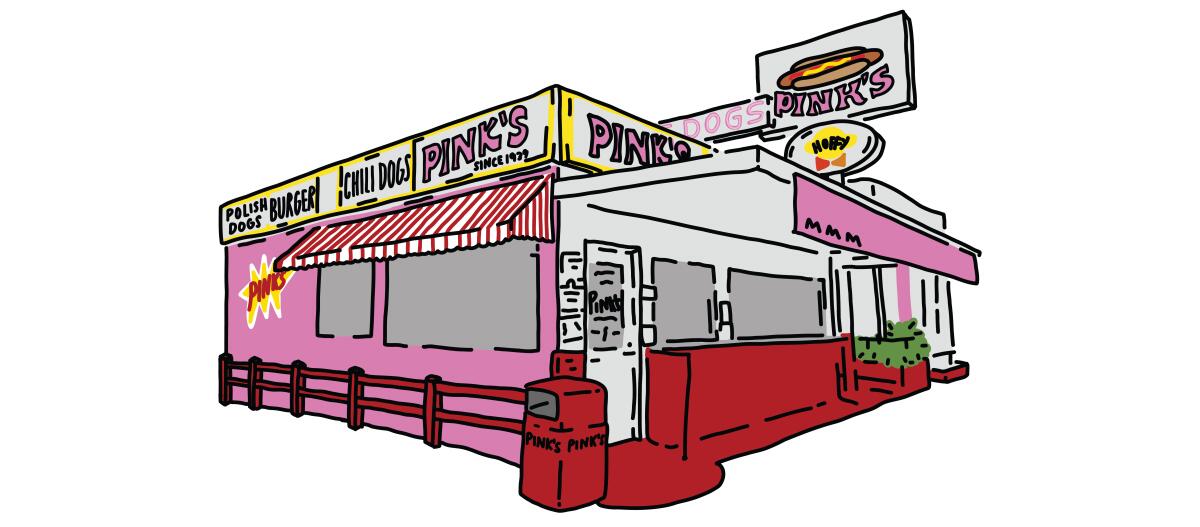
• • • • •
19
Whittier Boulevard arch, East L.A.
The 65-foot steel arch that stretches across the street debuted in 1986 to mark the city’s Latino Walk of Fame, but the sculpture quickly became a landmark unto itself.

• • • • •
18
Pacific Design Center
Architects Cesar Pelli and Norma Merrick Sklarek first brought us the glass building nicknamed “the blue whale” in 1975. Its green counterpart rose in 1988, and the last building — bold, glossy red — arrived in 2011.

• • • • •
17
Frank Lloyd Wright’s Hollyhock House
Originally designed as a home for oil heiress Aline Barnsdall, Frank Lloyd Wright’s elegantly grand Hollyhock House — a UNESCO World Heritage site — anchors Barnsdall Art Park in the Los Feliz neighborhood.
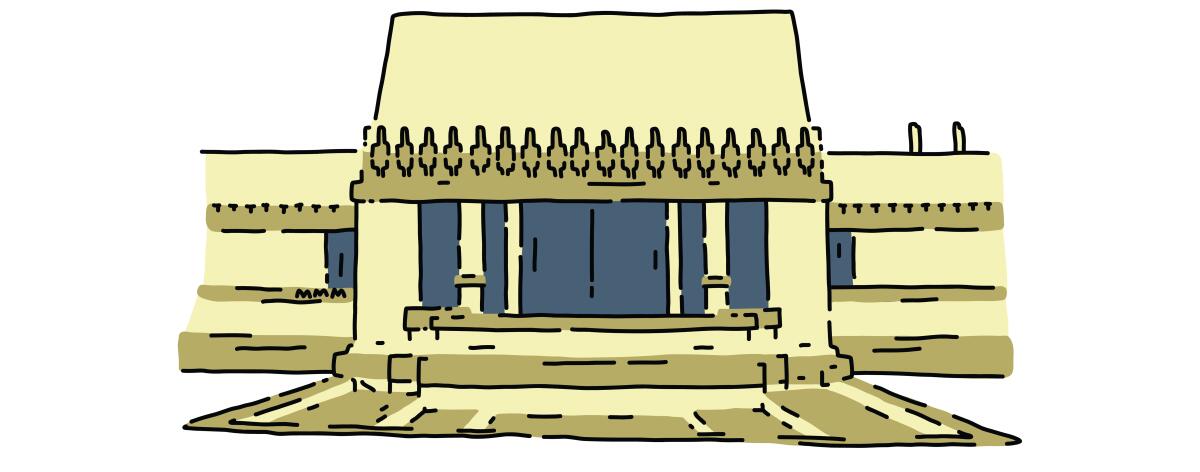
• • • • •
16
Randy’s Donuts
Forget the raised glazed and chocolate twist. The doughnut that matters most here is the 32-foot-high sign atop the midcentury drive-up in Inglewood, the chain’s inaugural location.
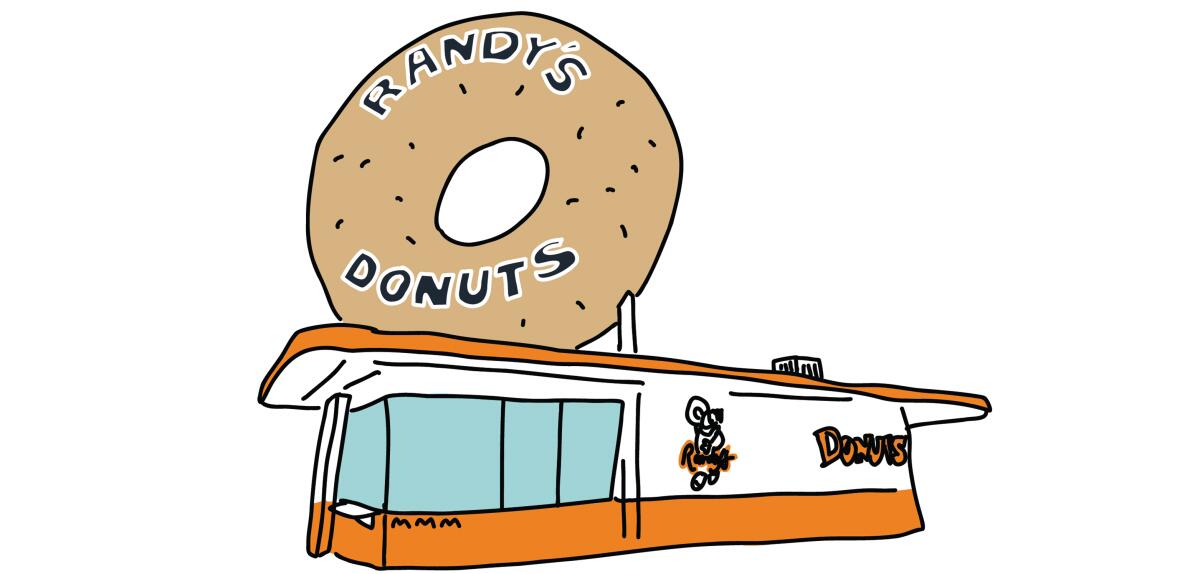
• • • • •
15
John Lautner’s Chemosphere house
This spaceship of a house is the ultimate L.A. pad: a modern city retreat surrounded by wild nature. Completed in 1960 for aerospace engineer Leonard Malin, and reached from the hillside via personal funicular, the midcentury design has starred in many movies, perhaps most notably Brian De Palma’s “Body Double.”
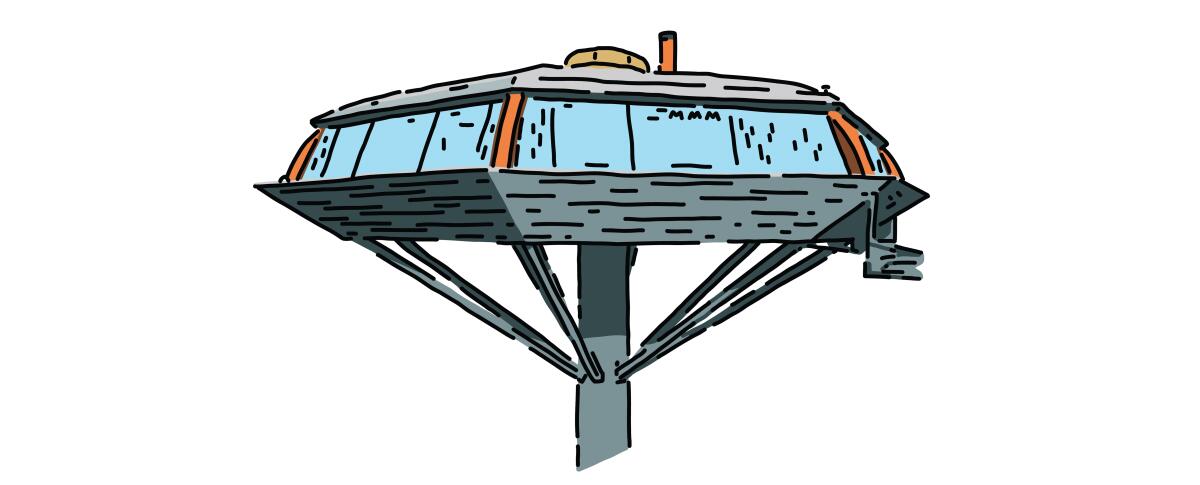
• • • • •
14
Santa Monica Pier
Built in 1909, the Santa Monica Pier was the first concrete pier on the West Coast. Its Ferris wheel, surfers and people fishing mark the heart of the Santa Monica beach scene.

• • • • •
13
The Getty Center
Architect Richard Meier’s 24-acre campus holds some of the world’s finest art, but many locals actually come for the gorgeous grounds, including Robert Irwin’s enchanting Central Garden — a living work of art.
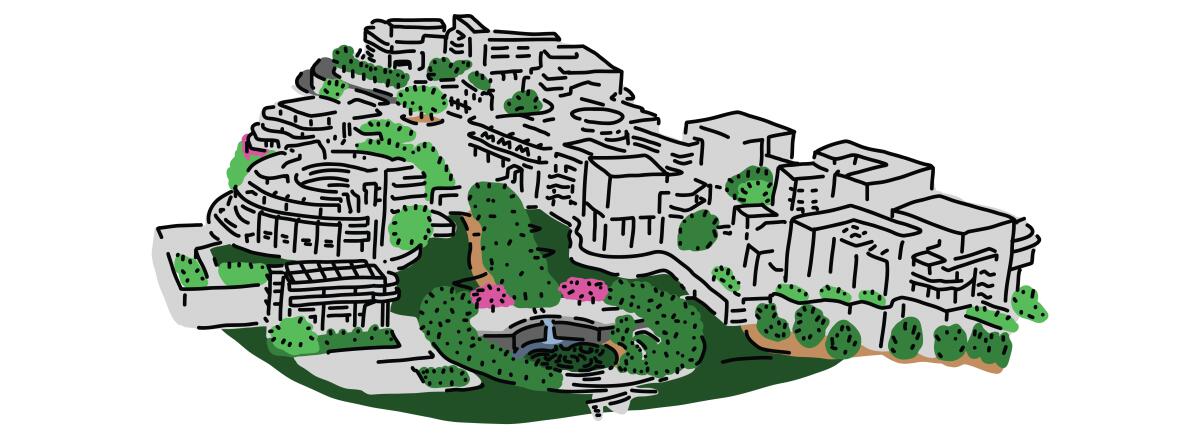
• • • • •
12
Mammoths at La Brea Tar Pits
The fiberglass mammoth family at the La Brea Tar Pits is one of L.A.’s most beloved — and heartbreaking! — tableaux: the baby with an outstretched trunk, forever reaching out to its parent sinking in the tar.

• • • • •
11
LAX Theme Building
Pereira & Luckman’s space age landmark has been welcoming people to L.A. since 1961 — a remarkable expression of the future, even after 60 years.

• • • • •
10
Cinerama Dome
Designed by Welton Becket & Associates and built in 1963 as the world’s first concrete geodesic dome, this 70-foot-high modernist movie theater has 3,000-pound panels bolted together following a technique patented by Buckminster Fuller.
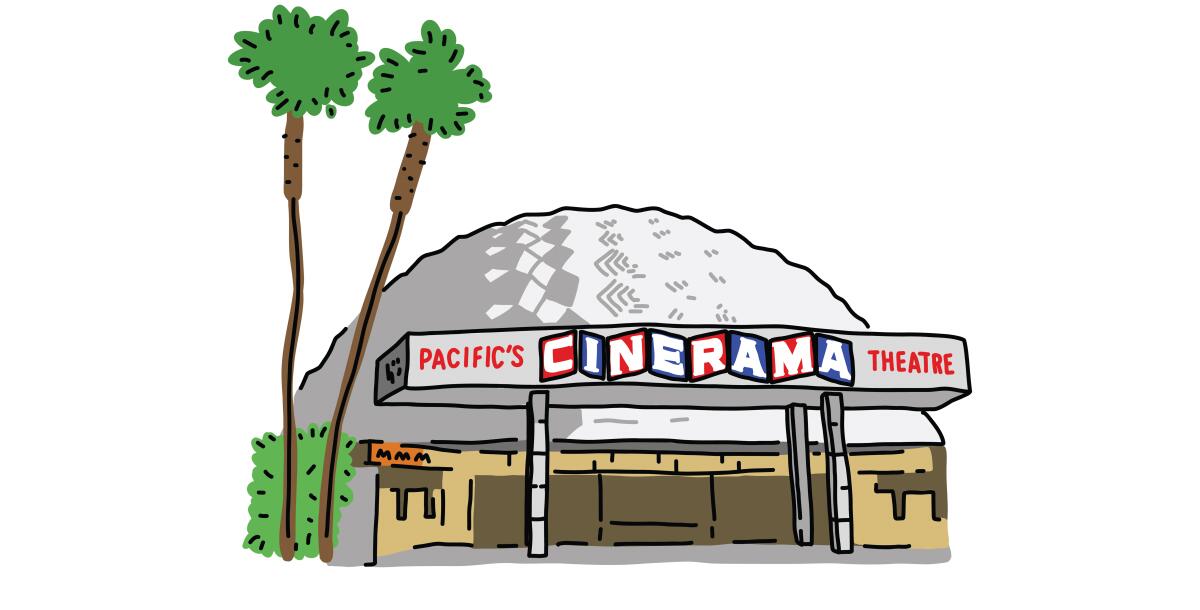
• • • • •
9
L.A. City Hall
The seat of the city’s power is this Art Deco gem built in 1928. Once the tallest building in the city, it has been seen in many films and TV shows, notably “Dragnet.”
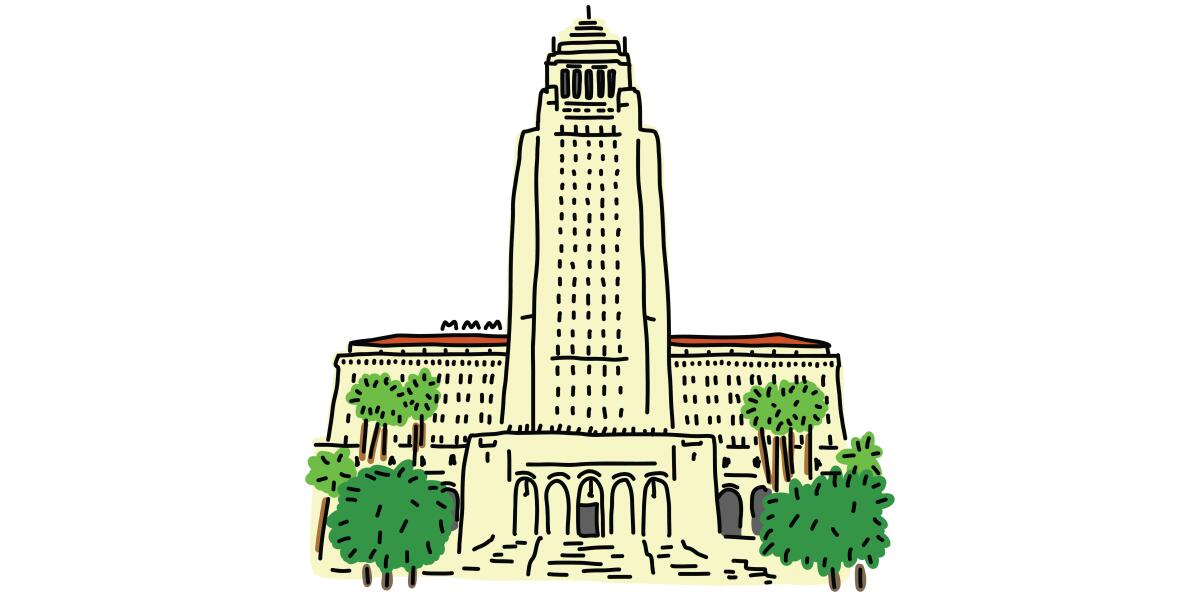
• • • • •
8
“Urban Light” at LACMA
Chris Burden’s sculpture of 202 vintage street lamps has been a must-see, must-photograph site for visitors since 2008 — objects of utility transformed into glowing imagination.
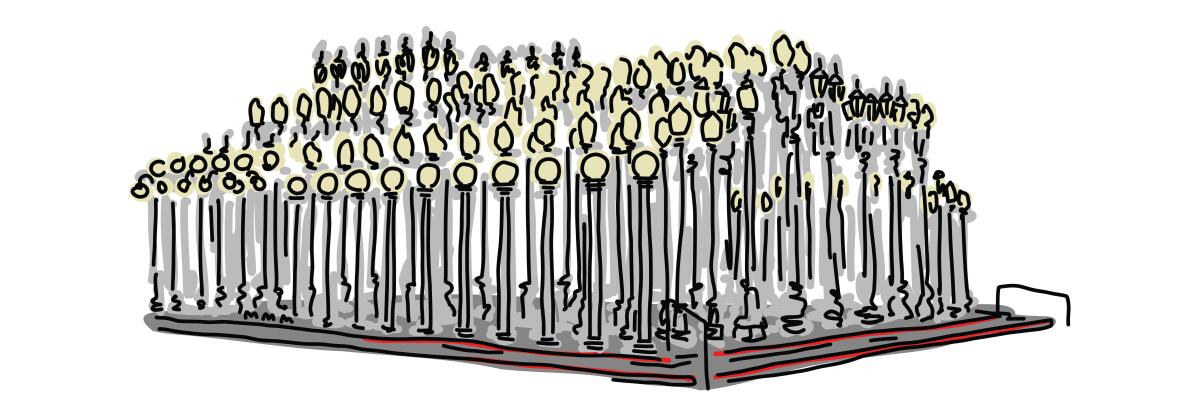
• • • • •
7
Chinese Theatre
It’s a gilded point of pilgrimage for film lovers, the place where the hands that shaped Hollywood history linger with every step on the sidewalk.
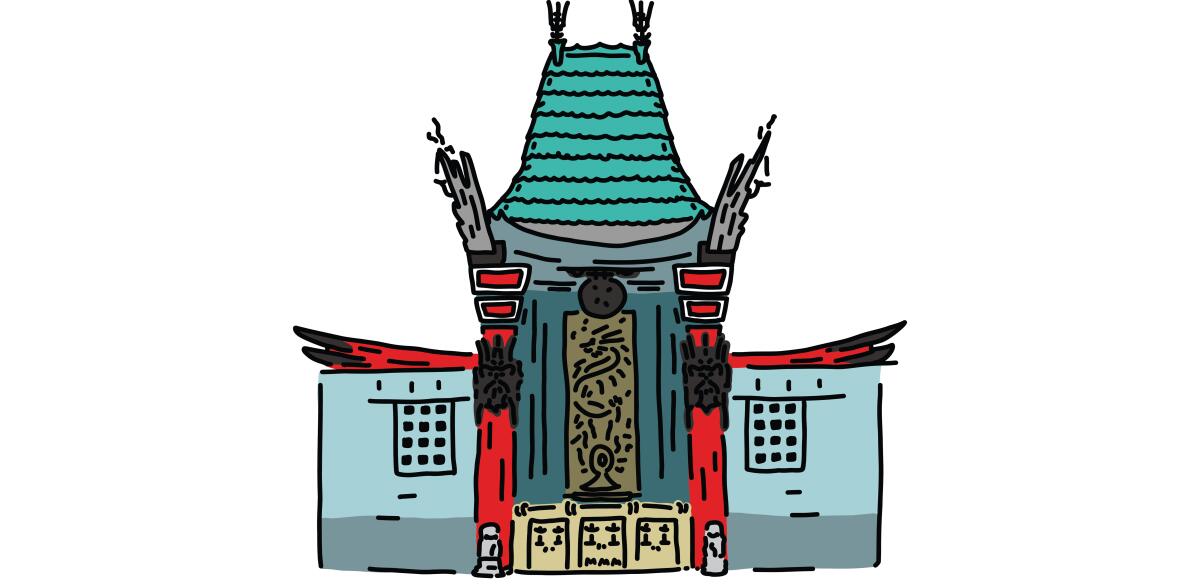
• • • • •
6
Hollywood Bowl
This bandshell in the Hollywood Hills has provided musical sustenance to Angelenos and visitors from around the world since 1929. When COVID-19 canceled the 2020 season, it was as if L.A. lost summer.

• • • • •
5
Capitol Records building
Welton Becket and Associates’ 1956 tower sits like a stack of vinyl ready to be spun. If the city’s love for a landmark can be measured in direct proportion to the number of times it gets destroyed on film, this architectural triumph takes the flaming cake.

• • • • •
4
Watts Towers
Built by Italian immigrant and tile mason Sabato Rodia between 1921 and 1954, these fantastical sculptural spires have become true symbols of the city — eloquent artistry in steel, shell, tile and rock.

• • • • •
3
Griffith Observatory
Our hillside beacon, aglow every night. Since 1935 it’s been delivering views of Hollywood, the Pacific Ocean and the heavens above.

• • • • •
2
Walt Disney Concert Hall
Frank Gehry’s swooping sails of stainless steel jumpstarted the renaissance of DTLA and give music fans a near-spiritual experience with every concert.

• • • • •
1
Hollywood sign
In 1923 L.A. Times publisher Harry Chandler erected letters spelling Hollywoodland as a promotion for a new subdivision. In the decades that followed, the “land” got dropped and pranksters occasionally tweaked the sign to spell “Hollyweed” and “Holywood” (during a papal visit), among other things. Today the enduring white capitals propped up on a hillside remind us not only where we are but also what to do: Keep dreaming.

The Academy Museum of Motion Pictures has opened as the ultimate celebration of Hollywood history, Oscar lore and today’s movie makers.
More to Read
The biggest entertainment stories
Get our big stories about Hollywood, film, television, music, arts, culture and more right in your inbox as soon as they publish.
You may occasionally receive promotional content from the Los Angeles Times.














